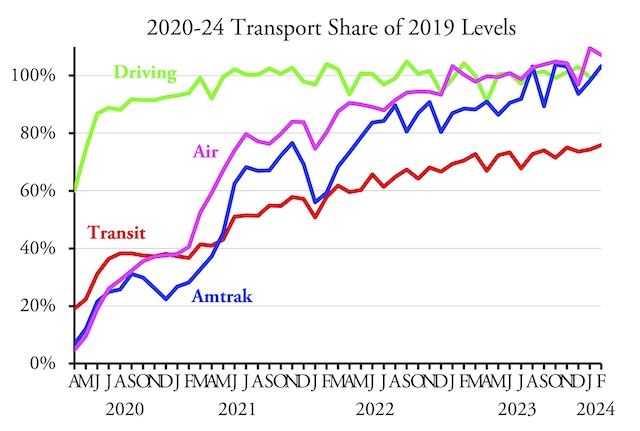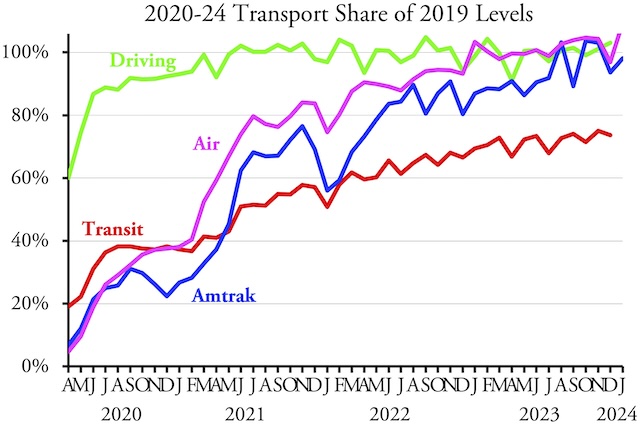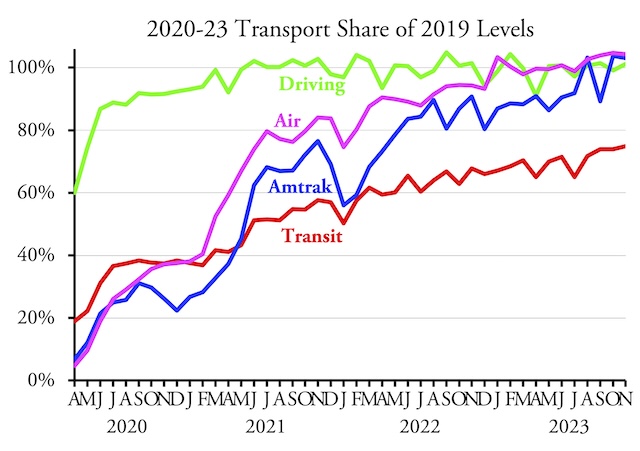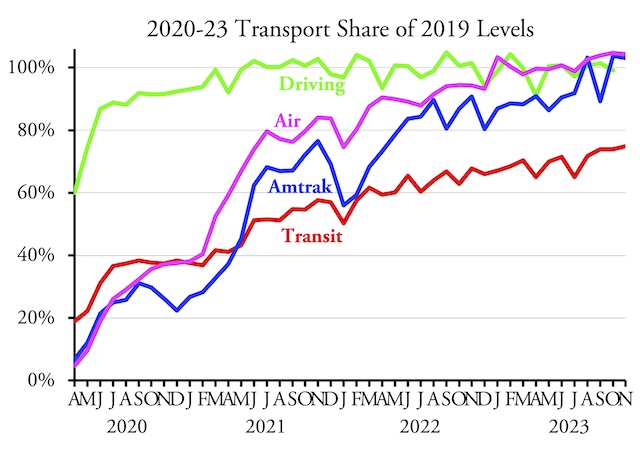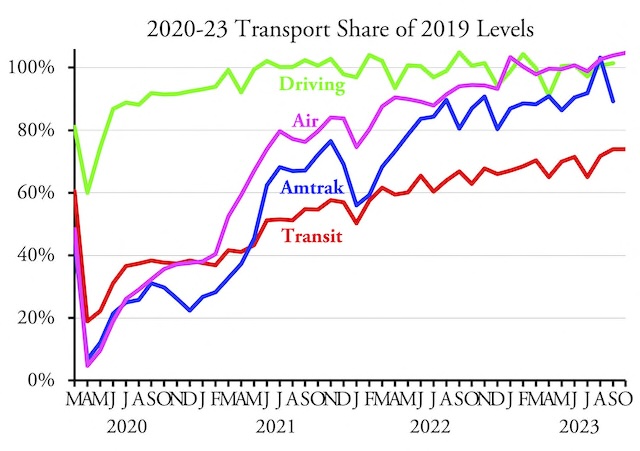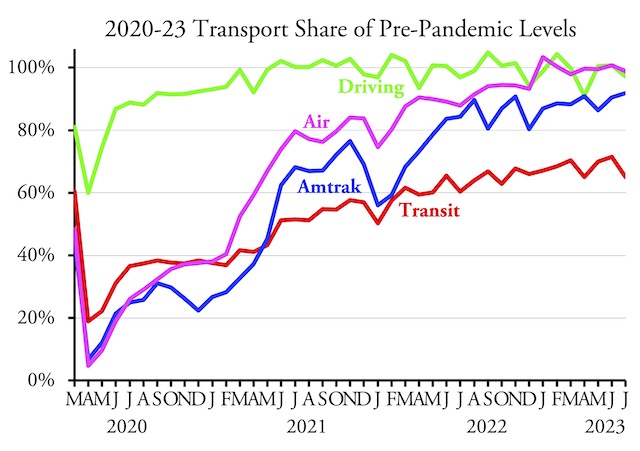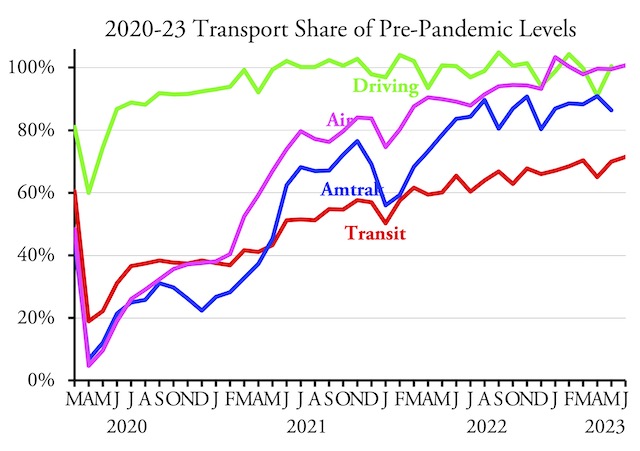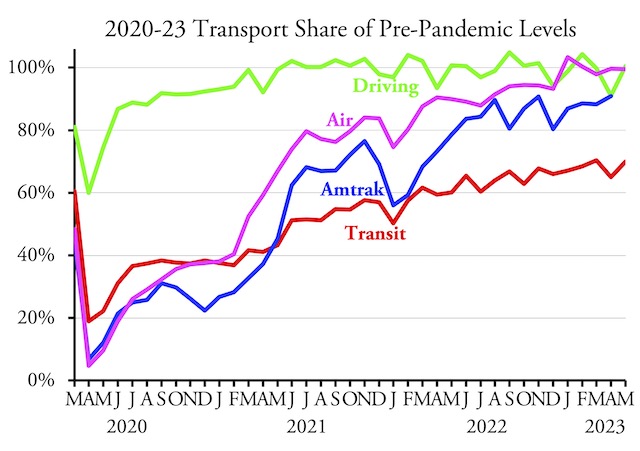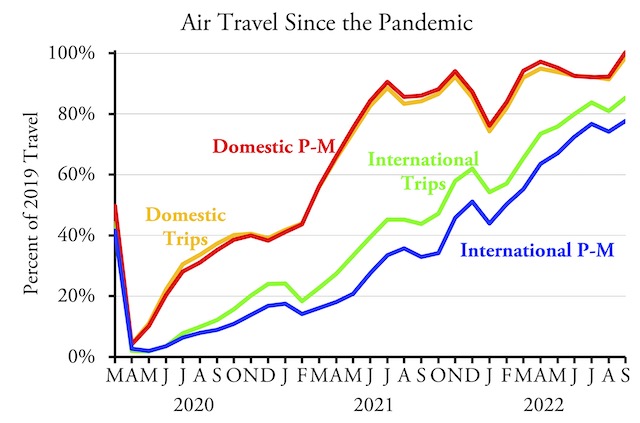Transit carried 78.5 percent as many riders in February 2024 as the same month of 2019. However, 2024 being a leap year February had one more day than in 2019. Adjusting for the extra day, transit’s daily ridership was only 75.8 percent of 2019, according to data released by the Federal Transit Administration yesterday. This means it continues to lag about 25 percent against all other major modes.
Meanwhile, Amtrak carried 3.2 percent more daily riders in 2024 than February of 2019, according to its monthly performance report. Transportation Security Administration passenger counts say that daily air travel was up by 7.2 percent above 2019. Highway data will be posted here soon, but will also be around 100 percent of 2019 driving.. Continue reading

